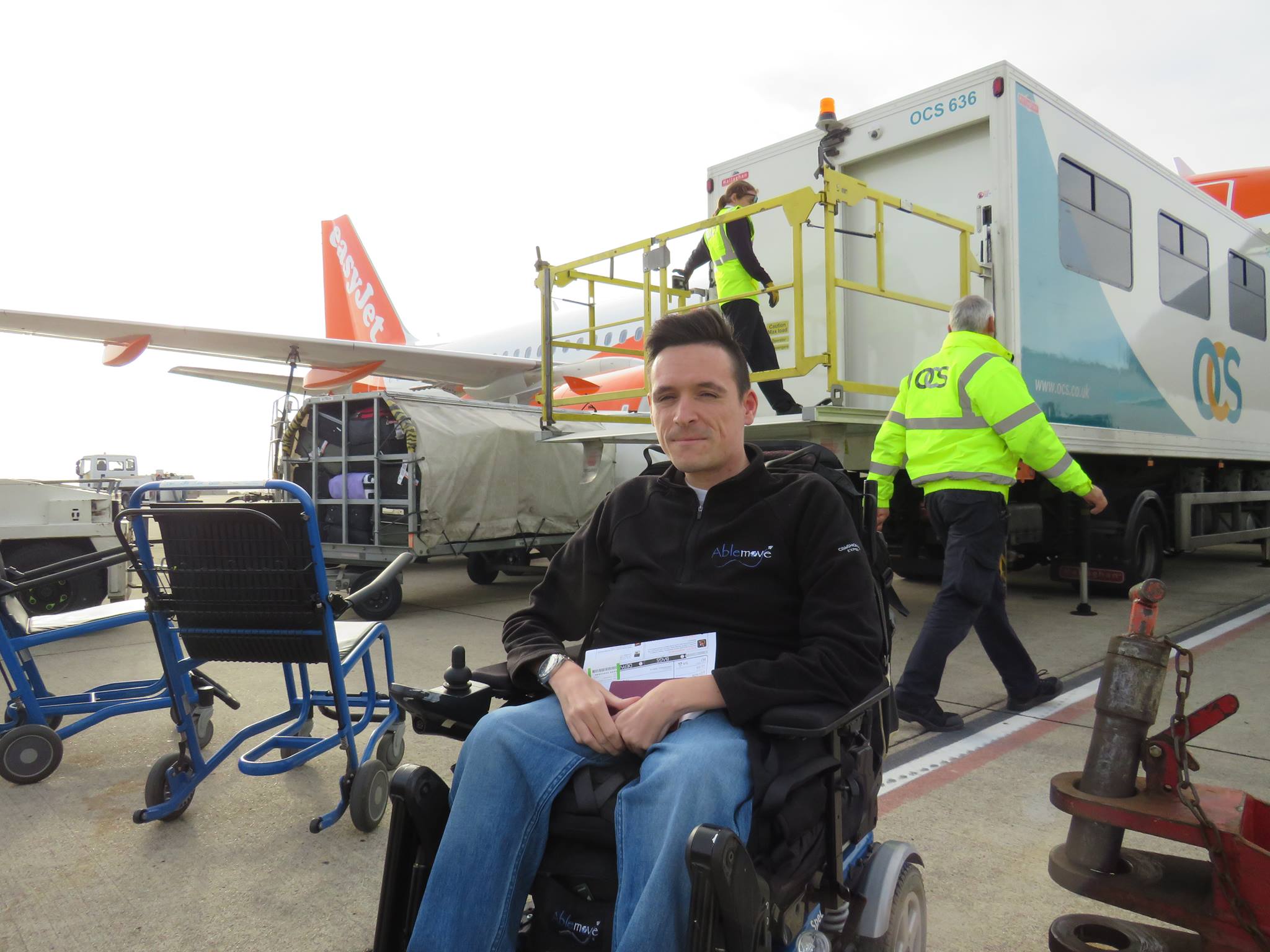ableMove Founder Josh Wintersgill recently flew to Tenerife from Bristol airport. The contradictions in Josh’s experience at both airports were stark and highlight a broader problem across the entire aviation industry in the lack of global standardisation for wheelchair users, specifically when in comes to the handling of wheelchairs by ground crew. You can read more about this here.
In 2021, IATA announced the launch of their mobility aid working group to reduce the amount of Electric Mobility Aids (EMA’s) and other devices such as manual wheelchairs from getting broken or lost when travelling by air.
In an ableMove survey carried out in 2021, 60% of wheelchair users who have flown by air have stated they have incurred wheelchair damage at some point whilst flying .
On the outbound flight from Bristol to Tenerife, there were issues with getting Josh’s Permobil F5 powered wheelchair into the hold and delayed the flight by 30 minutes. The cause of the delay is still unknown, but it appears that the ground crew did not have the right equipment immediately available to help with the loading of the chair from the tarmac, onto the belt and into the hold. Once they had the wheelchair in, there were issues in securing it and accessing the brakes.
Upon arrival in Tenerife, the assistance staff reclined Josh on the aisle chair when disembarking him instead of being upright, which helped with his balance and reduced pressure on the hips and lower back. Unfortunately, there was a 15 minute delay getting Josh’s wheelchair to the aircraft, but he was delighted to see his chair in one piece after the dilemma in Bristol.
On the outbound flight from Tenerife to Bristol, Josh was in the window seat, right by the aircraft’s hold where they loaded the wheelchairs. He was able to get a video of how the Spanish ground handlers worked with special assistance to get the wheelchair from the ambulift to the belt loader without having to lift the wheelchair. It appears to be a quick and effective way of getting a wheelchair onto the belt loader and into the hold.
In contrast, Josh also managed to get a video of his wheelchair getting taken off the aircraft at Bristol Airport. It took four men to lift this £27,000 wheelchair to the floor, which could have caused massive damage to the chair if dropped but also caused enormous damage to the backs of the ground handlers – Josh’s chair weighs 190kg with the batteries in.
Interestingly, the differences highlighted at the two different airports show the significant inconsistencies in how ground handlers at different airports manage how they load and unload EMA’s and the risks of wheelchairs getting damaged or staff incurring injuries are different at every airport.
Our survey highlighted problems faced by wheelchair users, including chairs getting lost, damaged or sent to baggage claims areas. The need for this working group at IATA is very much welcomed because of all these reasons. If you have not seen it already, check out Flying Disabled and PreistmanGoode’s recent announcement about their wheelchair in the cabin solution. The solution will totally eradicate the problem of wheelchairs being damaged, allowing wheelchair users to remain within their wheelchair for an entire flight.
“Every time I fly, there is always an element of worry about what is going to happen to my chair and I will continue to lobby and support decision makers across the industry to improve the total aviation experience for wheelchair users,” said Josh.
The aviation industry still has a long way to go in ensuring that wheelchair users can remain totally confident in flying through any airport in any country, but we certainly welcome any news of initiatives that move us one step further toward this goal.






Leave A Comment